CLASSICAL GUITARS
Showing 1–24 of 239 results
-
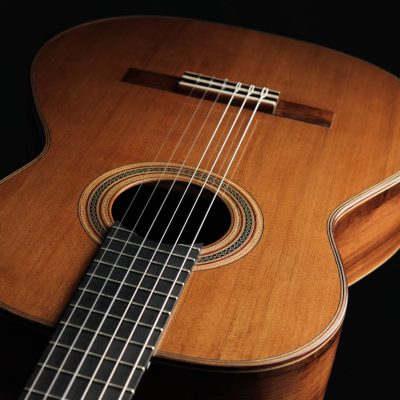
Fritz Ober – 2006
Price on request
plus shippingAdditional costs (e.g. for customs or taxes) may occur when shipping to non-EU countries. Delivery times are to be considered as approximate, may vary depending on the country of destination and delays may occur due to unforeseeable events. Read more -
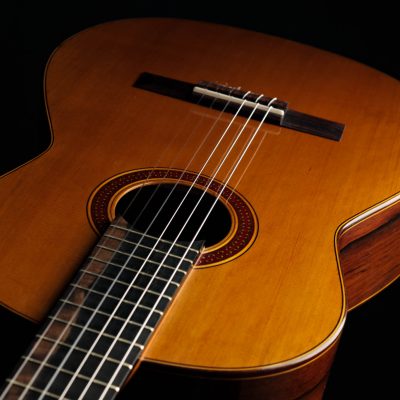
Otto Rauch – 2024 Doubletop No. 290 “Domenico Montagnana – The sleeping beauty” ON HOLD
13,520 $
Includes 0% VATplus shippingAdditional costs (e.g. for customs or taxes) may occur when shipping to non-EU countries. Delivery times are to be considered as approximate, may vary depending on the country of destination and delays may occur due to unforeseeable events. Read more -

Roberto Pozzi – 2024
8,575 $
plus shippingAdditional costs (e.g. for customs or taxes) may occur when shipping to non-EU countries. Delivery times are to be considered as approximate, may vary depending on the country of destination and delays may occur due to unforeseeable events. Add to cart -
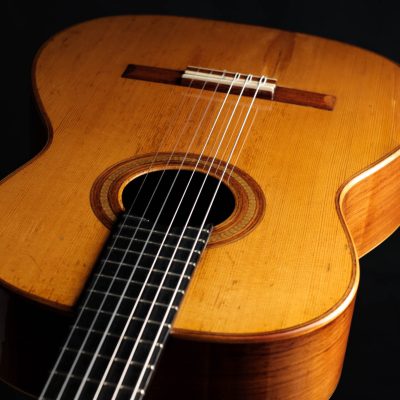
Edgar Mönch – 1959 ON HOLD
Price on request
plus shippingAdditional costs (e.g. for customs or taxes) may occur when shipping to non-EU countries. Delivery times are to be considered as approximate, may vary depending on the country of destination and delays may occur due to unforeseeable events. Read more -
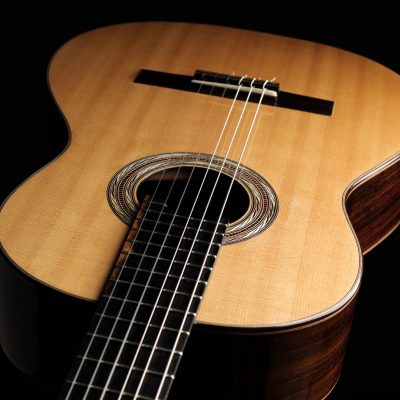
Florian Chauvet – 2024 Doubletop
6,429 $
plus shippingAdditional costs (e.g. for customs or taxes) may occur when shipping to non-EU countries. Delivery times are to be considered as approximate, may vary depending on the country of destination and delays may occur due to unforeseeable events. Add to cart -

Stephen Eden – 2023 No. 201
8,108 $
Includes 0% VATplus shippingAdditional costs (e.g. for customs or taxes) may occur when shipping to non-EU countries. Delivery times are to be considered as approximate, may vary depending on the country of destination and delays may occur due to unforeseeable events. Add to cart -

Stephen Hill – 2023 “Granada” No. 274
7,206 $
Includes 0% VATplus shippingAdditional costs (e.g. for customs or taxes) may occur when shipping to non-EU countries. Delivery times are to be considered as approximate, may vary depending on the country of destination and delays may occur due to unforeseeable events. Add to cart -
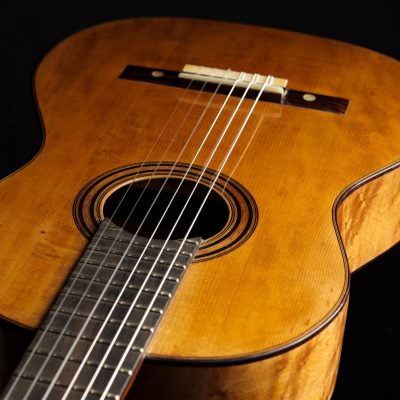
Lucio Antonio Carbone – 2023 Torres 1888
8,108 $
Includes 0% VATplus shippingAdditional costs (e.g. for customs or taxes) may occur when shipping to non-EU countries. Delivery times are to be considered as approximate, may vary depending on the country of destination and delays may occur due to unforeseeable events. Add to cart -

Marco Gilioli – 2023 No.55
6,965 $
plus shippingAdditional costs (e.g. for customs or taxes) may occur when shipping to non-EU countries. Delivery times are to be considered as approximate, may vary depending on the country of destination and delays may occur due to unforeseeable events. Add to cart -
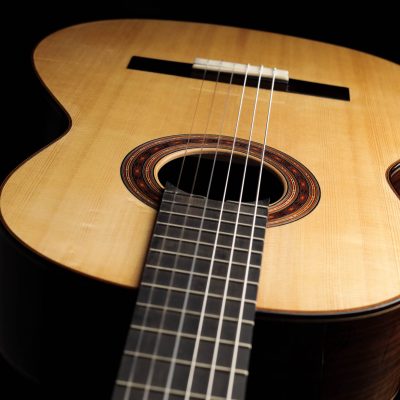
Ennio Giovanetti – 2023 “Daniel Friederich” ON HOLD
7,502 $
plus shippingAdditional costs (e.g. for customs or taxes) may occur when shipping to non-EU countries. Delivery times are to be considered as approximate, may vary depending on the country of destination and delays may occur due to unforeseeable events. Read more -

Marco Bortolozzo – 2018 No. 66 “Torres FE-09”
7,287 $
plus shippingAdditional costs (e.g. for customs or taxes) may occur when shipping to non-EU countries. Delivery times are to be considered as approximate, may vary depending on the country of destination and delays may occur due to unforeseeable events. Add to cart -
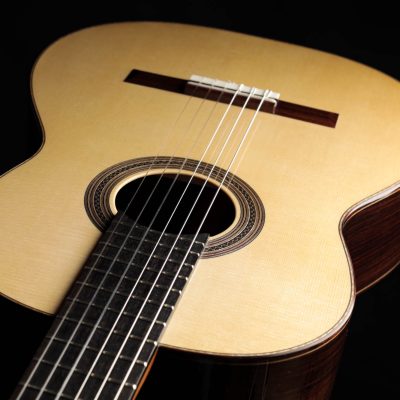
Thomas Dauge – 2024 “Concert Model” No. 164
12,868 $
plus shippingAdditional costs (e.g. for customs or taxes) may occur when shipping to non-EU countries. Delivery times are to be considered as approximate, may vary depending on the country of destination and delays may occur due to unforeseeable events. Add to cart -

Paul Hildebrandt – 2024 No. 14
7,502 $
plus shippingAdditional costs (e.g. for customs or taxes) may occur when shipping to non-EU countries. Delivery times are to be considered as approximate, may vary depending on the country of destination and delays may occur due to unforeseeable events. Add to cart -
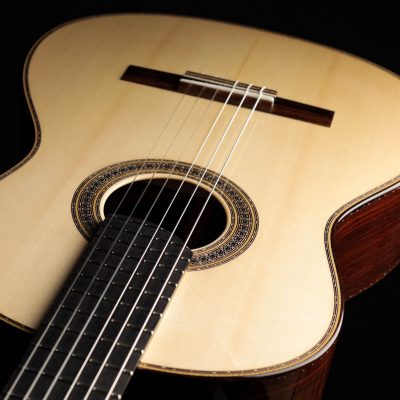
Paul Hildebrandt – 2024 No. 13
7,502 $
plus shippingAdditional costs (e.g. for customs or taxes) may occur when shipping to non-EU countries. Delivery times are to be considered as approximate, may vary depending on the country of destination and delays may occur due to unforeseeable events. Add to cart -

Graziano Calanna – 2023 Spruce/Indian
4,049 $
Includes 0% VATplus shippingAdditional costs (e.g. for customs or taxes) may occur when shipping to non-EU countries. Delivery times are to be considered as approximate, may vary depending on the country of destination and delays may occur due to unforeseeable events. Add to cart -
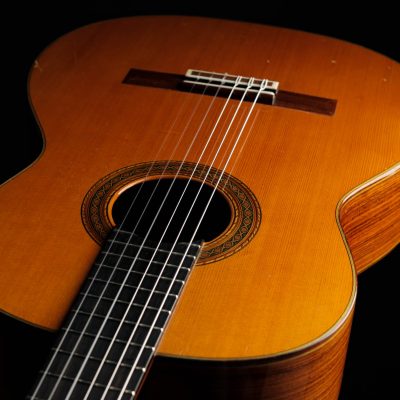
Masaru Kohno – 1969 No. 8 ON HOLD
3,745 $
plus shippingAdditional costs (e.g. for customs or taxes) may occur when shipping to non-EU countries. Delivery times are to be considered as approximate, may vary depending on the country of destination and delays may occur due to unforeseeable events. Read more -

Karel Dedain – 2024
9,912 $
Includes 0% VATplus shippingAdditional costs (e.g. for customs or taxes) may occur when shipping to non-EU countries. Delivery times are to be considered as approximate, may vary depending on the country of destination and delays may occur due to unforeseeable events. Add to cart -

Tobias Braun – 2023 Romanillos
9,912 $
Includes 0% VATplus shippingAdditional costs (e.g. for customs or taxes) may occur when shipping to non-EU countries. Delivery times are to be considered as approximate, may vary depending on the country of destination and delays may occur due to unforeseeable events. Add to cart -

So Kimishima – Sol Cedar 64 cm ON HOLD
6,304 $
Includes 0% VATplus shippingAdditional costs (e.g. for customs or taxes) may occur when shipping to non-EU countries. Delivery times are to be considered as approximate, may vary depending on the country of destination and delays may occur due to unforeseeable events. Read more -
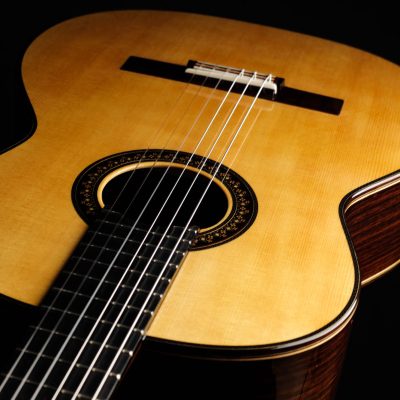
So Kimishima – Stella Classic Spruce
5,312 $
Includes 0% VATplus shippingAdditional costs (e.g. for customs or taxes) may occur when shipping to non-EU countries. Delivery times are to be considered as approximate, may vary depending on the country of destination and delays may occur due to unforeseeable events. Add to cart -

Sakurai Kohno – Special Left-Hand Spruce 64 cm
5,853 $
Includes 0% VATplus shippingAdditional costs (e.g. for customs or taxes) may occur when shipping to non-EU countries. Delivery times are to be considered as approximate, may vary depending on the country of destination and delays may occur due to unforeseeable events. Read more -
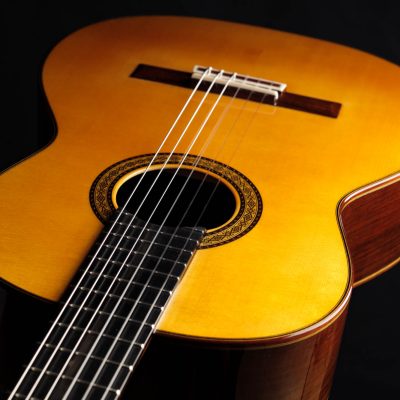
Masaki Sakurai – Concert-J Left-Hand Spruce 63 cm
4,500 $
Includes 0% VATplus shippingAdditional costs (e.g. for customs or taxes) may occur when shipping to non-EU countries. Delivery times are to be considered as approximate, may vary depending on the country of destination and delays may occur due to unforeseeable events. Add to cart -
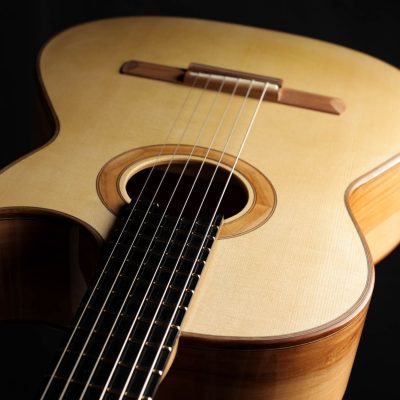
Martin Bretscher – 2023 Custom Bluesmate Steel String
4,230 $
Includes 0% VATplus shippingAdditional costs (e.g. for customs or taxes) may occur when shipping to non-EU countries. Delivery times are to be considered as approximate, may vary depending on the country of destination and delays may occur due to unforeseeable events. Add to cart -
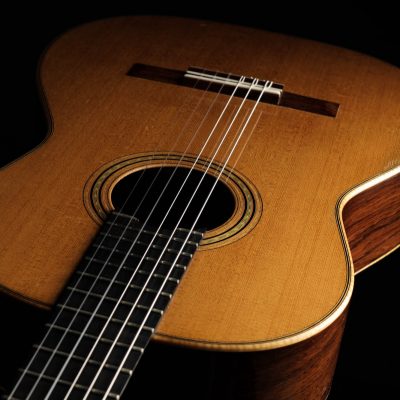
Edmund Blöchinger – 2003 No. 110
Price on request
plus shippingAdditional costs (e.g. for customs or taxes) may occur when shipping to non-EU countries. Delivery times are to be considered as approximate, may vary depending on the country of destination and delays may occur due to unforeseeable events. Read more
The Classical Guitar
The terms classical guitar, concert guitar, or Spanish guitar refer to the same instrument. However, classical guitars are strung with nylon strings, while acoustic or western guitars are strung with steel strings. Antonio de Torres (1817-1892) is considered a pioneer in modern guitar construction. He is recognized as the pivotal figure in modern guitar making. His instruments became the starting point for the development of classical guitars in the 19th and 20th centuries.
The revolutionary significance of Torres’ guitar creation lies in size: as the body of the current six-string guitar requires a larger volume, he not only increased the back and sides, but also designed at least five different upper shapes to fit his guitar. Compared to his contemporaries’ productions, almost all of these shapes have a larger range. Although Torres’ guitars are larger, he aimed to keep the weight of the guitar as low as possible. With very thin boards, the cut at the thickest point is only 2.5 mm. To account for the fact that despite its low weight and thickness, the top can withstand string tension, he used fan bracing instead of the previous transverse bars. This strengthens the top and distributes the vibration across the surface.
The scale length, i.e., the length of the free-swinging string, is set at 65 cm, and the neck is assembled from several separate pieces to prevent warping. Torres widened the fretboard to give more space to the fingers of his left hand. To tune the guitar, he used a more accessible mechanism instead of wooden pegs.
The Classical Guitar is mainly used in classical music (especially chamber music) and folk music, Latin American music, and flamenco dance.
Music written specifically for the classical guitar dates back to the late 18th century when the sixth string was added (the Baroque guitar typically had five pairs of strings).
Music Pieces for Classical Guitar
A guitar concert can include a variety of works, such as pieces originally written for the lute or vihuela by composers like John Dowland (born 1563 in England) and Luis de Narváez (born around 1500 in Spain), as well as music written for the harpsichord by Domenico Scarlatti (born 1685 in Italy), for the Baroque lute by Sylvius Leopold Weiss (born 1687 in Germany), and for the guitar by Sylvius Leopold Weiss. Italy 1685), for the Baroque lute by Sylvius Leopold Weiss (born Germany 1687), for the Baroque guitar by Robert de Visée (born France around 1650), or Spanish-influenced music for the piano by Isaac Albéniz (born Spain 1860) and Enrique Granados (born Spain 1867). The most significant composer who didn’t write for the guitar but whose music is often played on it is Johann Sebastian Bach (born Germany 1685), whose Baroque lute works have proven highly adaptable to the instrument.
From music originally written for the guitar, the earliest important composers come from the Classical period and include Fernando Sor (born 1778 in Spain) and Mauro Giuliani (born 1781 in Italy), both of whom wrote in a style strongly influenced by Viennese Classicism. In the 19th century, guitar composers like Johann Kaspar Mertz (born Slovakia, Austria 1806) were heavily influenced by the dominance of the piano. It wasn’t until the end of the 19th century that the guitar began to establish its own unique identity. Francisco Tárrega (born 1852 in Spain) played a central role in this, incorporating stylized aspects of Flamenco’s Moorish influences into his Romantic miniatures. This was part of the late 19th-century European musical mainstream nationalism. Albéniz and Granados were central to this movement; their invocation of the guitar was so successful that their compositions were included in the standard guitar repertoire.
The steel-string and electric guitars characteristic of the rise of rock and roll in the post-war period became increasingly popular in North America and the English-speaking world. Agustín Barrios Mangoré from Paraguay composed many works and brought the characteristics of Latin American music into the mainstream, as did the Brazilian composer Heitor Villa-Lobos. Andrés Segovia commissioned works from Spanish composers like Federico Moreno Torroba and Joaquín Rodrigo, Italians like Mario Castelnuovo-Tedesco, and Latin American composers like Mexican Manuel Ponce. Other prominent Latin American composers include Leo Brouwer from Cuba, Antonio Lauro from Venezuela, and Enrique Solares from Guatemala. The British guitarist Julian Bream managed to persuade almost every British composer from William Walton and Benjamin Britten to Peter Maxwell Davies to write significant works for the guitar. Julian Bream’s collaboration with tenor Peter Pears also produced song cycles by Britten, Lennox Berkeley, and others. There are significant works by composers like Hans Werner Henze from Germany, Gilbert Biberian from England, and Roland Chadwick from Australia.
The classical guitar also became widespread in popular music and rock & roll in the 1960s after guitarist Mason Williams popularized the instrument in his instrumental hit “Classical Gas.” The guitarist Christopher Parkening is quoted in the book “Classical Gas: The Music of Mason Williams” as saying that it’s the most requested guitar piece after “Malagueña” and perhaps the best-known instrumental guitar piece today. In the realm of New Flamenco, the works and performances of Spanish composer and player Paco de Lucía are widely recognized.
Throughout history, not many classical guitar concertos have been written. Nonetheless, some guitar concertos are well-known and popular today, especially Joaquín Rodrigo’s Concierto de Aranjuez (with the famous theme from the 2nd movement) and Fantasía para un gentilhombre. Composers who have also written famous guitar concertos include: Antonio Vivaldi (originally for mandolin or lute), Mauro Giuliani, Heitor Villa-Lobos, Mario Castelnuovo-Tedesco, Manuel Ponce, Leo Brouwer.
The Classical Guitar – Which Wood is Suitable for Me and My Ideal Sound?
The selection of wood, especially for the top, the craftsmanship by the manufacturer, and the finishing are crucial for the sound characteristics and quality of a concert guitar / classical guitar. For very high-quality instruments, spruce or cedar wood with fine, evenly distributed, and narrow growth rings is mainly used for the top. Other types of wood are also used depending on the desired sound. Cedar wood produces a slightly warmer timbre with complex overtones. Mahogany wood sounds warmer and slightly less overtone-rich than spruce. The choice of top wood is thus a matter of specific tonal preferences. For the sides, top, and back, mahogany, rosewood, cedar, or maple are used. The neck is usually made of cedar, mahogany, or another wood such as rosewood, cedar, or maple. The preferred wood for the fretboard is rosewood, less commonly ebony. Walnut, Indian laurel, and Micarta are increasingly used for fretboards as well. Notably, rosewood has been listed in CITES Appendix Two for protected woods since February 2017.
Back and Side Wood for a Classical Guitar
Approximately 30% of the total resonance volume of concert guitars is determined by the choice of sides and back. Typically, mahogany, rosewood, and maple are used. Rosewood, with its very high wood density, combined with a spruce top, provides a very balanced sound. In contrast, the same model with mahogany sides and back yields a significantly warmer sound in the bass and midrange, but less brilliance in the treble. Sides and back made of maple provide a very clear sound with a direct response.
The Top Wood of Classical Guitars
For classical guitars, two types of top woods are distinguished, each producing a different sound from the ground up. The widely used spruce top sounds brighter and more brilliant in the higher frequencies and requires significantly more playing time to develop a fuller overtone spectrum compared to the much darker-sounding cedar top. The cedar top vibrates much more voluminously and warmly than spruce but will not develop the same clear brilliance in the treble even after extended play.
Do I Need a Pickup?
The installation of a pickup adds additional costs to production, which are also reflected in the selling price. In the beginner and mid-range segment of concert guitars, relatively simple piezo pickups are used, which work wonderfully on stage due to their relatively low susceptibility to feedback. However, the body resonance of the corpus is hardly captured because a piezo pickup is mounted under the bridge and only transmits direct string vibration. The top pickups and condenser microphones in the corpus sound much warmer, more natural, and dynamic. These pickups are more commonly found in the premium segment of concert guitars and are also ideal for direct recording in the studio. However, the mentioned technique is much more susceptible to feedback, as both the condenser microphone and the top pickup also transmit the corpus resonance. This problem is often addressed with so-called built-in notch filters, phase switches, or compressors. Modern pickups are mostly connected to an active preamplifier, which raises the rather weak output signal of the pickup and is often equipped with a built-in tuner and equalizer for individual sound control.
What are the Pros and Cons of a Cutaway?
The cutaway is a cutout at the lower part of the body of a classical or acoustic guitar, allowing for more relaxed playing in the higher positions. As a small part of the soundboard is cut out due to the cutaway, it loses some acoustic resonance compared to a body without a cutaway. There are generally two different cutaway designs. The pointed cutaway is called a Florentine cutaway, while the rounded cutaway is called a Venetian cutaway. Both cutaway forms can be found in steel-string guitars as well as classical guitars.
The Classical Guitar as a Beginner’s Instrument
A classical guitar is the perfect entry into playing the guitar, as the much softer nylon strings are much easier for beginners to fret than the thin and stiff steel strings of a steel-string or electric guitar. Concert guitars are also available in sizes 1/4, 1/2, 3/4, 4/4, and 7/8, allowing even the youngest players to find a comfortable and ergonomically suitable instrument.
What Makes Siccas Guitars Special?
At Siccas Guitars, you can buy high-quality classical guitars, Spanish guitars, concert guitars. In contrast to many other retailers, Siccas Guitars focuses on high-quality master guitars and rare guitars, such as those by Hermann Hauser I, Hermann Hauser II, Hermann Hauser III, Daniel Friederich, José Ramirez, Paulino Bernabé, Santos Hernandez, Domingo Esteso, Enrique Garcia, showcased on www.siccasguitars.com and via social media channels. Customers can watch lovingly produced videos on YouTube and the website. These videos feature masterful musicians such as Ana Vidovic, Tatyana Ryzhkova, Isabella Selder, Julia Trintschuk, Stephanie Jones, Cyprien N’tsaï, Alexandra Whittingham, Carlotta Dalia, Julia Lange, Judith Bunk, Roman Viazovskiy, Valeria Galimova, Natalia Lipnitskaya, Edson Lopes, and many more. Siccas Guitars specializes in master guitars, acoustic guitars, and historical guitars from around the world. They also have a large assortment of concert and student guitars from brands such as Hanika, Duke, Altamira, Raimundo, etc., to provide young talents and hobby musicians with optimal equipment. Together with their customers, they want to develop new ideas and share experiences.
Buying Guitars: Your Guide to Acquiring the Perfect Instrument
Guitars have been one of the most beloved instruments on the market for years. From beginners to professionals, the guitar offers opportunities for anyone looking to make music. Whether you’re looking for an electric, acoustic, or steel-string guitar, here are the best tips for buying a guitar.
Acoustic Guitars: Ideal for Beginners
The concert guitar is often the first choice for beginners. With soft nylon strings and a wider fretboard, it’s comfortable to play. If you’re new to the world of music, a concert guitar is a cost-effective entry point.
Steel-String Guitar: For Blues and Folk Songs
The steel-string guitar is suitable for those who want to play with steel strings. If you’re heading towards blues or folk, this type of guitar is ideal. Your fingers will adjust to the steel strings after a short period, so don’t let this hold you back.
Electric Guitars: Perfect for Rock and Metal
The electric guitar is a dream for rock and metal enthusiasts. Connect it to an amplifier and experiment with different sounds. Rock stars love electric guitars because of their versatility, and so can you.
Guitar Accessories: What Do You Need?
You can’t play the guitar without the right accessories. Invest in guitar picks, straps, and a bag for easy transportation. If you’re planning to play electric, an amplifier is a must. And don’t forget spare strings, a tuner, and a metronome to keep your guitar in top shape.
Buying Guitars: New vs. Used
New guitars offer the latest technology and modern features. Used guitars can provide vintage sound and character. Consider your budget and preferences when deciding between new and used guitars.
Choosing the Perfect Guitar
Buying a guitar is a personal decision. Consider the type of music you want to play and your skill level. Visit music stores to try different guitars and find the one that feels right in your hands. With the right guitar, your musical journey will be off to a great start.
In conclusion, the world of classical guitars is rich and diverse, offering a wide range of options for players of all levels. Whether you’re a beginner, an intermediate player, or an advanced guitarist, finding the right classical guitar involves considering factors like wood type, sound characteristics, and additional features like pickups. To make an informed decision, it’s important to try out different guitars, explore various brands, and seek guidance from experienced players or professionals. With the right instrument, you’ll be able to enjoy the beautiful tones and versatility that the classical guitar has to offer.
For more information and a curated selection of high-quality classical guitars, you can explore the offerings of reputable retailers like Siccas Guitars, who specialize in providing a range of options to suit different preferences and playing styles.
Happy playing and exploring the wonderful world of classical guitars!



 COPY
COPY COPIED
COPIED
